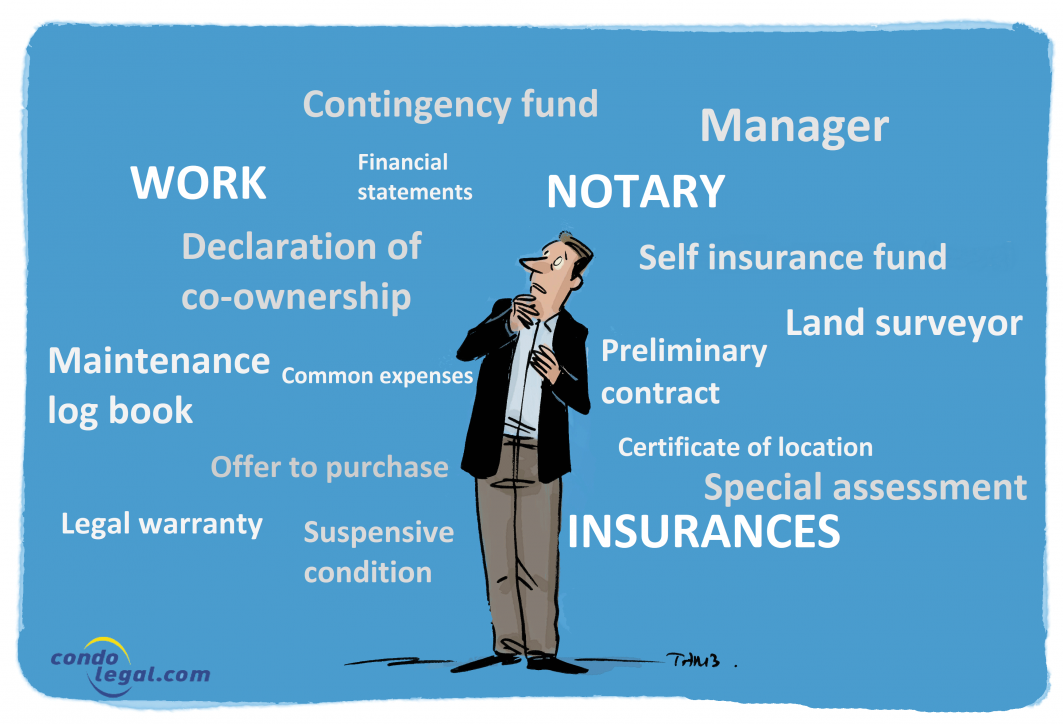19 Articles

Legal expense insurance is an essential protection for co-owners offering partial or full reimbursement of lawyers' or notaries' professional fees with the objective of preventing or resolving a dispute; although this insurance has conditions, deductibles and limits, it can be a major asset in the event of a conflict. Insurance companies offering this type of coverage (guarantee) may recommend legal professionals but can't impose a choice. It is important for co-owners to carefully review their policy to understand…...

Most insurance policies include deductibles, with amounts varying based on the insured risk. For example, the deductible for water damage is generally higher than that for fires. The purpose of the deductible is to make the insured responsible by having them cover part of the repair costs for damages caused by the incident. For the syndicate, the advantage lies in reduced premiums, while also encouraging the prevention of incidents. For a community of co-owners, this deductible…...

The insurance premium is the amount that the insured must pay, either monthly or annually, to benefit from the coverage provided by the iinsurance policy in case of a loss. It is a cost associated with the maintenance, upkeep, and administration of the building. Although the co-ownership syndicate is responsible for covering this cost, the resulting expenses are charged to the co-owners through their common expenses (condo fees). However, in recent years, there has been…...

The additional premium is a premium that is added to the existing premium. It results from a worsening of the risk or from the assumption of a new risk. This additional premium may be imposed during the course of a contract or upon its renewal. Risks are analyzed according to scales that are specific to each insurer. Ultimately, the syndicate will pay this additional premium, which will be charged to all of the co-owners through…...

After being victims of a loss, the members of the board of directors and the affected co-owners are often caught off guard. How will things unfold? There is no need to worry or panic, because in principle, once the notice of loss completed, various stakeholders get involved: the insurer of the syndicate, but also that of co-owners and lessees, who will respectively designate their own claim adjuster. Generally the co-owners affected by a loss, as well…...

In the event of a loss, it is imperative for the insured, whether a co-owner or a director of a co-ownership syndicate, to report the incident to their insurer as soon as possible. This declaration generally triggers the designation of a claims adjuster by the insurer. This professional is responsible for assisting the insured throughout the claims process, assessing the damages, advising on measures to take, and facilitating administrative procedures. Investigating the circumstances of a…...

Any co-ownership can one day face a major disaster. For example, a fire might ravage several units, or water damage might affect multiple floors due to a burst pipe. These situations lead to very high repair costs and are classified as "substantial loss". The financial burden can be overwhelming for individual co-owners and the syndicate. Managing the insurance indemnity by the board members can be extremely complex. Proper allocation of these funds requires careful planning…...

Article 1039 of the Civil Code of Quebec provides that the community of co-owners, as a legal entity, has the mission of preserving the building, maintaining, and managing the common portions. This article also states that the syndicate of co-owners must ensure the execution of the necessary work to prevent the deterioration of the building's common portions. Furthermore, it specifies that the syndicate has a legal obligation to uphold these duties diligently. In case of default,…...

You move into your new condo. A few weeks later, a bailiff knocks on your door and serves upon you a notice of preservation of a legal hypothec of construction. He also served all your neighbors. Reading this document, you learn that a dispute remains unresolved between the developer and a construction contractor (or subcontractor), concerning work performed or materials furnished that have not been paid by the contractor. Often, these problems are resolved through the…...
